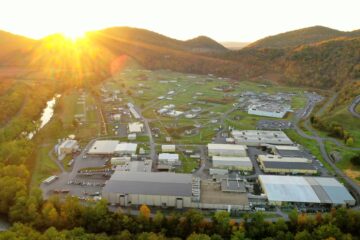Northrop Grumman press release
“Fire Scout is the Navy’s only unmanned helicopter with the ability to deploy from a ship or land with ISR&T at the extended range required for future warfighting,” said Capt. Dennis Monagle, U.S. Navy. “The system is vital in expeditionary use for situational awareness and critical decision-making.”
MQ-8C Fire Scout was launched from the Vertical Take-Off and Landing Tactical Unmanned Air Vehicle Maintenance Detachment at Naval Base Ventura County in Point Mugu, California, simulating a ship-based departure. The Navy conducted a control system hand-off of the MQ-8C Fire Scout from Point Mugu to San Clemente Island, California, demonstrating the ship-to-shore transition capability of the platform in a maritime expeditionary environment.
With the Navy’s Portable Mission Control Station (MCS-P), the system was recovered and redeployed rapidly for operational flexibility. The portable MCS-P ground control station helps MQ-8C Fire Scout basing in austere locations on land, helipad operations in an advanced forward location, and logistics support from ship flight decks. With identical ship-based hardware, screen configuration and software, operations remain consistent across all ship classes.
“We are supporting MQ-8C deployments on littoral combat ships while assisting the Navy with Fire Scout mission expansion efforts to include operations from other surface ships and shore-based sites,” said Lance Eischeid, director, Fire Scout program, Northrop Grumman. “This EABO demonstration further proves the flexible utility of Fire Scout for expeditionary use from land and across multiple ship classes.”
Fire Scout continues Northrop Grumman’s 70-year heritage of designing, building, delivering and sustaining the world’s most capable unmanned aircraft system.
About MQ-8C Fire Scout

The MQ-8C Fire Scout is the Navy’s next-generation autonomous helicopter. The MQ-8C Fire Scout’s airframe is based on the commercial Bell 407, a mature helicopter with more than 1,600 airframes produced and over 4.4 million flight hours. Combined with the maturity of Northrop Grumman’s autonomous systems architecture, Fire Scout meets customer requirements for ship-based and land-based autonomous systems.
It also has the ability to autonomously take off and land on any aviation-capable ship and from prepared and unprepared landing zones. This enhancement significantly increases range and endurance (more than double) and payload capacity (more than triple). The MQ-8C has completed developmental testing and is ready to deploy.
There are two Fire Scout variants. The smaller MQ-8B Fire Scout has deployed on multiple frigates and is currently deployed on a Littoral Combat Ship (LCS). MQ-8B Fire Scout has also deployed to Afghanistan to support counter-improvised explosive device (IED) operations. This system has completed more than 16,600 flight hours over 6,200 sorties.
The U.S. Navy has integrated a multi-mode maritime radar on MQ-8B and tested an onboard weapons capability, the Advanced Precision Kill Weapon System (APKWS). The MQ-8B Fire Scout has also demonstrated the ability to operate concurrently with other manned aircraft while operating at sea.






